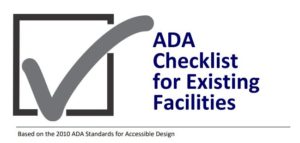 In 1990, Congress passed the Americans with Disabilities Act (ADA) in a step to shift the country toward accessibility for all. The 28th anniversary of the bill’s passage is on July 26th. Since 1990, the ADA has been defined and redefined again to include all levels of disabilities, including mental health challenges.
In 1990, Congress passed the Americans with Disabilities Act (ADA) in a step to shift the country toward accessibility for all. The 28th anniversary of the bill’s passage is on July 26th. Since 1990, the ADA has been defined and redefined again to include all levels of disabilities, including mental health challenges.
Laws can change as new situations arise. In fact, that is how the United States has expanded the ADA so far. With new challenges, lawmakers include additional elements or amendments to solve similar problems in the future. What are some other ways the law has changed? What else do individuals with disabilities and families need to know?
How to Get Accommodations You Need
For most, if not all, accommodations, it is necessary to have the proper documentation ready. According to the U.S. Office of Personnel Management, disability documentation may take the form of a letter on medical letterhead stationery, records from a government agency that issues benefits, or certification from a private counselor that provides benefits.
Other documentation may apply, so always ask to make sure you know what you need.
How to Receive Support at Universities
The process of receiving support differs from school to school, but similar documentation is usually necessary. Following documentation, students can work with the appropriate office to coordinate support.
Being a self-advocate is important to receiving support in college. Students with disabilities may need to approach their teachers and discuss their support needs in person. For example, when classes are in inaccessible buildings, it could even be possible to move the class to an accessible classroom.
How to Check for Accommodations at Businesses
 All government buildings and offices, as well as businesses and nonprofits, must be accessible to people with disabilities on an equal basis as others. The ADA National Network provides checklists online to help with this.
All government buildings and offices, as well as businesses and nonprofits, must be accessible to people with disabilities on an equal basis as others. The ADA National Network provides checklists online to help with this.
The ADA Network has several checklist versions available, including fillable and non-fillable Word documents and PDFs. The sections in this checklist include accessibility of entrances, bathrooms, and access to goods and services.
Finding accessibility resources is not always easy. But if you know what businesses and buildings are supposed to have, you can help make the world more accessible for everyone.









